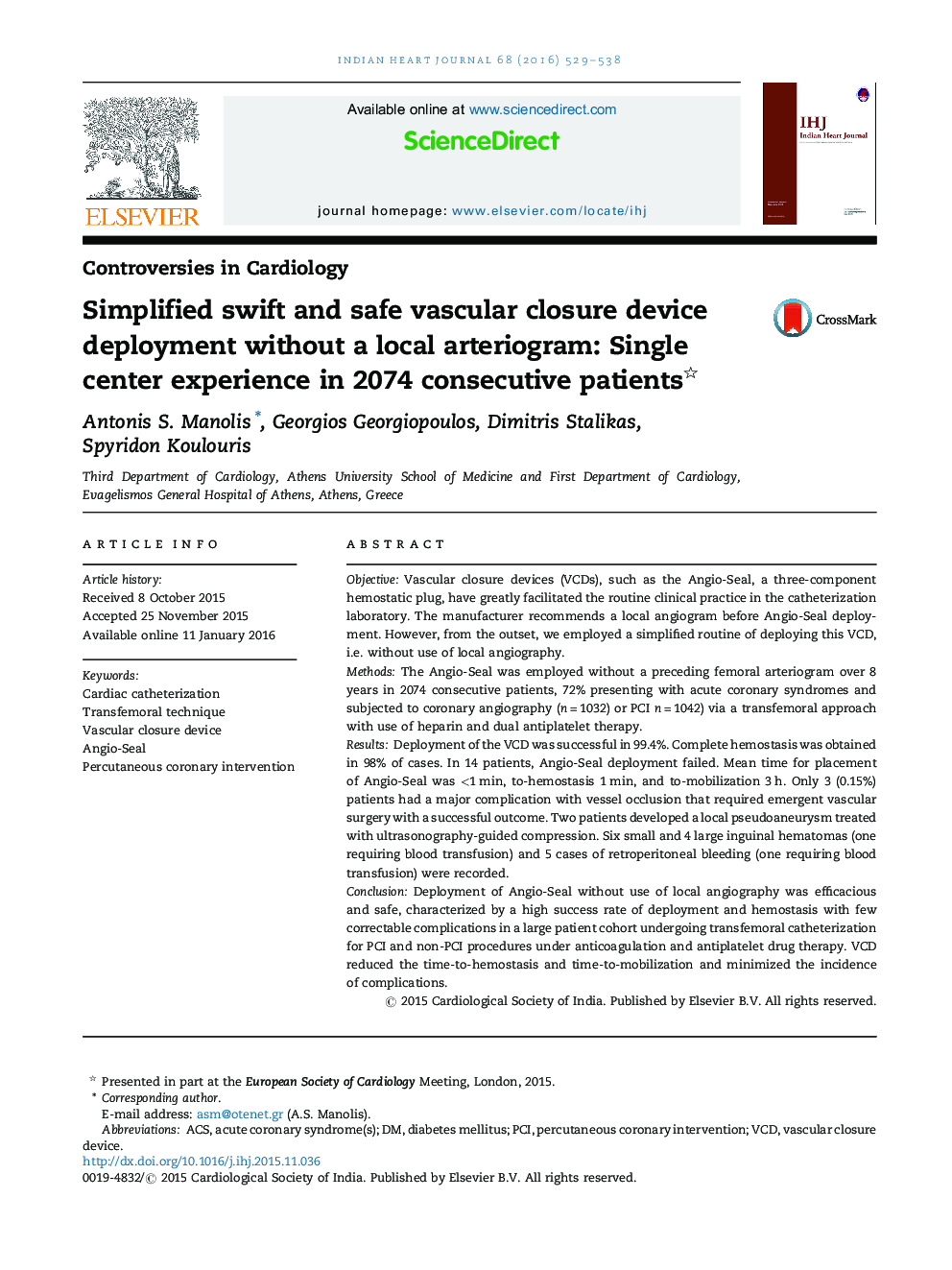| Article ID | Journal | Published Year | Pages | File Type |
|---|---|---|---|---|
| 2927326 | Indian Heart Journal | 2016 | 10 Pages |
ObjectiveVascular closure devices (VCDs), such as the Angio-Seal, a three-component hemostatic plug, have greatly facilitated the routine clinical practice in the catheterization laboratory. The manufacturer recommends a local angiogram before Angio-Seal deployment. However, from the outset, we employed a simplified routine of deploying this VCD, i.e. without use of local angiography.MethodsThe Angio-Seal was employed without a preceding femoral arteriogram over 8 years in 2074 consecutive patients, 72% presenting with acute coronary syndromes and subjected to coronary angiography (n = 1032) or PCI n = 1042) via a transfemoral approach with use of heparin and dual antiplatelet therapy.ResultsDeployment of the VCD was successful in 99.4%. Complete hemostasis was obtained in 98% of cases. In 14 patients, Angio-Seal deployment failed. Mean time for placement of Angio-Seal was <1 min, to-hemostasis 1 min, and to-mobilization 3 h. Only 3 (0.15%) patients had a major complication with vessel occlusion that required emergent vascular surgery with a successful outcome. Two patients developed a local pseudoaneurysm treated with ultrasonography-guided compression. Six small and 4 large inguinal hematomas (one requiring blood transfusion) and 5 cases of retroperitoneal bleeding (one requiring blood transfusion) were recorded.ConclusionDeployment of Angio-Seal without use of local angiography was efficacious and safe, characterized by a high success rate of deployment and hemostasis with few correctable complications in a large patient cohort undergoing transfemoral catheterization for PCI and non-PCI procedures under anticoagulation and antiplatelet drug therapy. VCD reduced the time-to-hemostasis and time-to-mobilization and minimized the incidence of complications.
